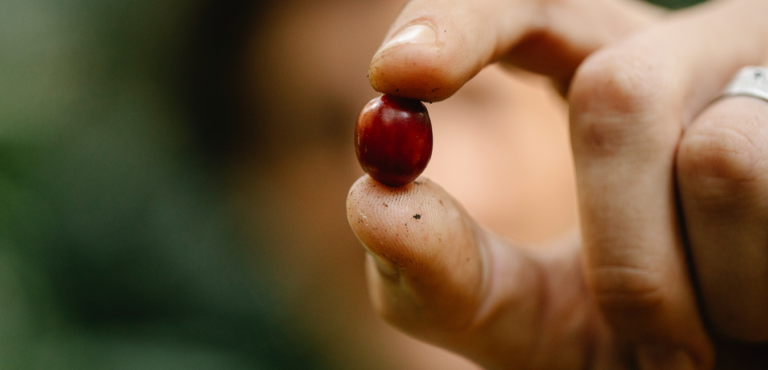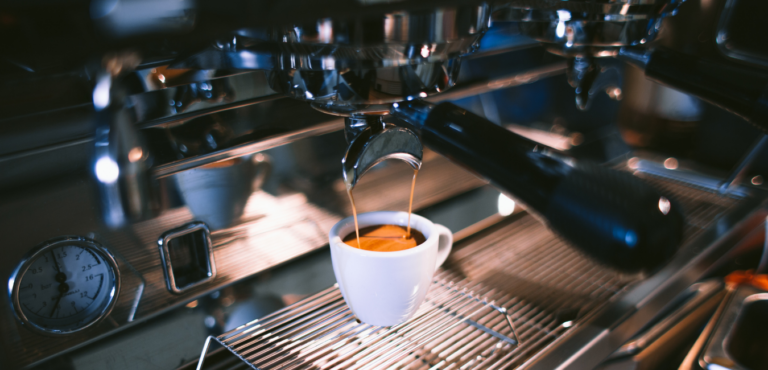Coffee’s Fascinating Journey: Farm To Cup
The cup of coffee you know and love is very well-traveled. In just a few years, our coffee goes from being planted to being sipped on. With the ongoing specialty coffee revolution, more of us are curious about the journey of our coffee. There’s a rise in consideration for the origin and it has paved the way toward a better coffee ecosystem. With part of our attention at the origin, farmers & producers are given a chance at a better life, and it simultaneously makes it challenging for corporations to charge a premium.
Your coffee experience ultimately changes based on the journey it takes. As coffee lovers, the best bet at getting quality & value is making sure that we get our beans from the source, or at least as close to it as possible. All coffee is not made the same. During the years of coffee production, farmers dedicate every waking moment to creating something unique. Understanding their process may deem new-fangled respect for the efforts of farmers.
Planting The Coffee Seeds
Contrary to the widely popular classification, coffee beans are actually seeds. Coffee is only brewed after this seed is dried, roasted, and ground. The seed is where it all begins. Initially, it’s planted in a nursery along with its brethren in a region with sufficient rainfall, consistent temperatures, and ample sunlight (on the bean belt). Once these saplings meet the requirements for plantation, they’re moved from the nursery to the farm.
Harvesting The Cherries
Depending on environmental conditions and varietals, it takes 3-4 years for the coffee plant to be ready for harvest. The coffee beans (or rather seeds) start as cherries, and over time, they change from a shade of light green to deep red. At this point, they’re ready to be picked. In most coffee-producing countries, cherries are hand-picked because coffee farms are usually situated in an elevated landscape, and this limits access to farming machinery. In countries like Brazil, however, the flat terrain enables a mechanized harvest process. The mechanized process can sometimes lead to picking cherries with inconsistent ripeness & sub-par quality. However, with increased technology adoption this can be avoided.
Processing & Drying
Once the coffee is picked, it’s a race against time. Processing must begin at the earliest to prevent spoilage. Depending on the region and the farm’s access to resources, one of three methods is employed.

The ‘natural method’ is an old-fashioned way to process the cherries, and is still used in countries where water is less accessible. Picked cherries are spread out over a wide area to let the sun dry them out. They’re periodically tossed and moved around to prevent the cherries from getting spoiled. Over a few weeks, the moisture content of the cherry drops to about 11%, at which point they’re ready for the next stage.
The ‘wet method’ is typically employed in countries where water is abundant. Fresh cherries are added to a pulping machine that separates the skin & pulp from the coffee bean. After the beans are fermented naturally in water to remove any undesirable mucilage, they’re ready to be either machine-dried or sun-dried till the desired moisture content of 11% is achieved.
While the ‘honey method’ is executed in numerous ways, the principle is somewhat similar across the variations. Skin & pulp from the cherry is separated from the seeds like in the wet method. But unlike the wet method, the mucilage is allowed to remain. Beans are then dried with the mucilage, and the presence of sugars changes the raw coffee color from light green to dark yellow.
After the beans are dried, they’re milled. This removes the parchment layer that sits around the bean. Hulling machinery is used to separate the entire dried husk. Sometimes the beans are polished after this stage, but this is usually skipped since it doesn’t make a discernible difference.

Export
After processing, the beans are now officially ‘green coffee’. At this point, the coffee is still raw and yet to be roasted. From the farmers’ perspective, their job is done, they’ve gotten paid, and it’s time to focus on the next harvest. But before that, the coffee has to travel across the world to reach its destined country. Shipping and export aren’t much of a challenge in today’s ecosystem, and yet there are some concerns to pay heed to, moisture build-up being the primary. During transit over the ocean, dried beans are prone to absorbing moisture which could break down some of the delicate flavors, and cause microbial growth. There are several new packaging options to control moisture buildup and alleviate these concerns.
After the coffee is shipped and exported, a qualified ‘cupper’ roasts a small amount of green coffee in a sample roaster to evaluate the flavors & aroma. Several coffee brands get involved at this stage to find the right beans for their product.
Coffee Roasting & Packaging
Once the green coffee is handed over to coffee brands & roasting companies, beans of multiple origins are mixed to create their house blends. The type of packaging and process varies depending on the product. For big roasted coffee retailers, beans are roasted (typically dark roast – to mask the differences between different origins or inconsistent quality of beans), packaged, and shipped out to consumers. Third-wave specialty roasters generally roast lighter than big retail brands to preserve origin flavors.
For products like ground coffee, coffee pods, coffee concentrates, and such, packaging happens after several other stages. These products are usually processed in large industrial batches where uniformity is prioritized over quality & personalization. To drink & enjoy coffee that was made for you, a roastery would be a decent choice, or better yet, roasting your coffee at home. Many coffee-connoisseurs (much like us) are beginning to understand the value of home coffee roasting.

Coffee made from home-roasted beans is several notches above everything else on the market. Even your local roastery can’t match the brilliance of a personalized cup of joe because batch roasting by default is a process that reduces personalization to create a uniform product. The beauty of home coffee roasting is in its value proposition.
For one, the endless potential for personalization. As a consequence of how different we are as people, we have varying preferences in roast, flavor, strength, texture, and acidity. To pick your origin, roast it, and brew a cup of coffee that was destined for your taste buds is nothing short of magical. Secondly, it costs a mere fraction of the price of roasted coffee and ensures that farmers at the origin are treated fairly since the product comes straight out of their farm. By reducing supply chain redundancies, more of the profit can be allocated to the farmers. Third, it’s best to avoid the stale retail coffee and instead roast it fresh for a world of flavor.
Plus, roasting coffee is pretty easy. Read through our full guide on home coffee roasting here. Let’s break any preconceived notions that roasting coffee is challenging.
Grinding Coffee
This step only applies if you buy your beans whole. And if you do, you’d agree that the smell of freshly ground coffee is truly divine. Every brew method & origin has an appropriate grind size, and grinding the beans too fine or too coarse is a recipe for sub-par coffee. Here’s our recommended grind size for each brew method.

Brewing
Finally, the promised land. This is the last step in your coffee’s journey from being planted to being sipped on. This is the only part of the process that most coffee-lovers have control over. Brew method is an important factor, but in comparison with the coffees’ origin, roast, and grind, it has a profoundly minimal effect on your cup. The easy way out isn’t always the best one, especially when roasting and grinding your coffee at home can be made effortless.
Every coffee-lover deserves access to the best coffee within reach. One should get closer to the starting point of their coffee (aka green coffee bean) because the flavor, freshness, and personalization are amplified with each eliminated step. But it would be unfair to expect every coffee-lover to travel the world looking for the best coffee farms and co-ops. That’s why we’ve done it for you. At Bunafr, we’ve created a green coffee marketplace with some of the best & most unique green coffees from all over the world along with a Smart Home Coffee Roaster. With just one click, you’ve essentially unlocked a whole new world of coffee.








